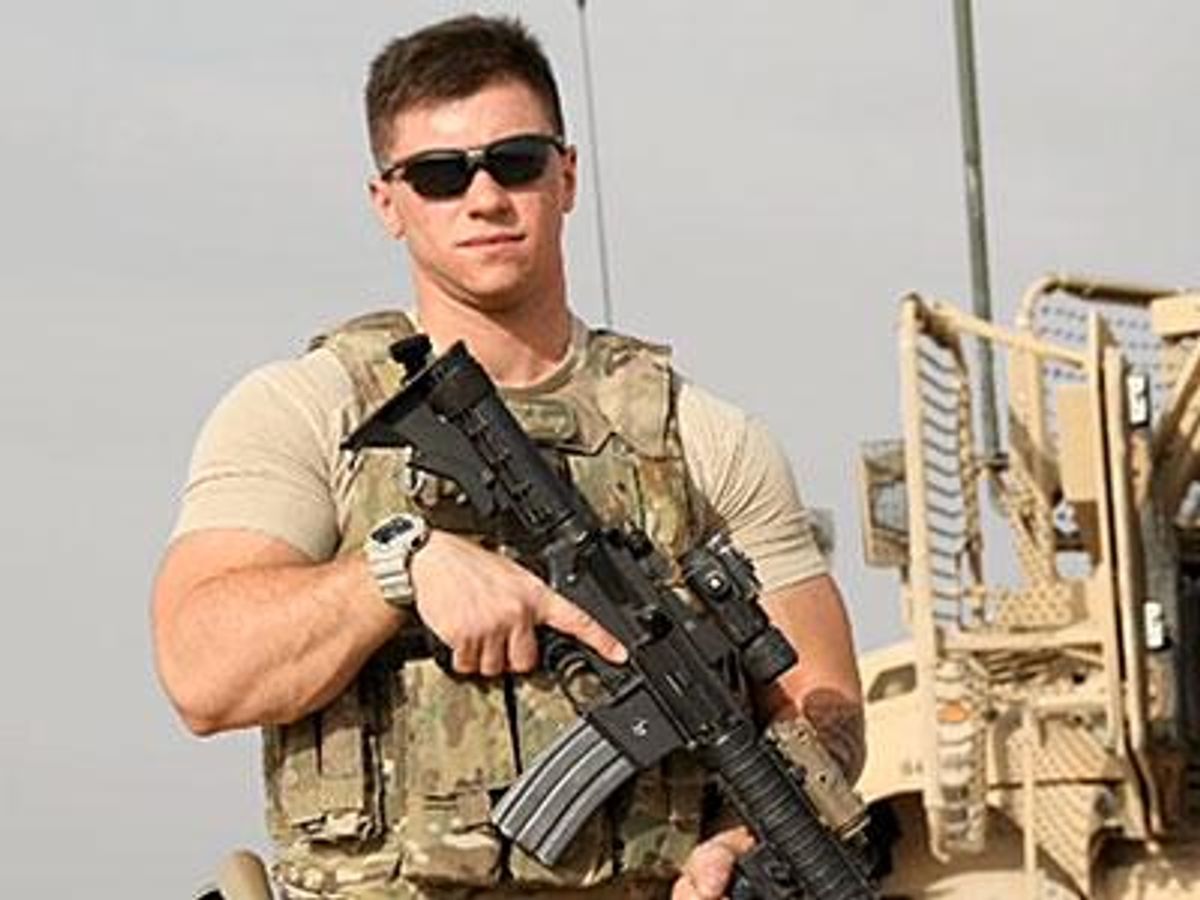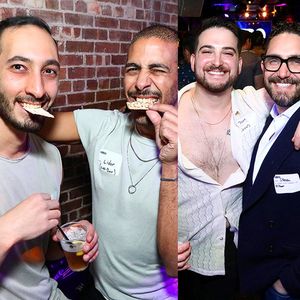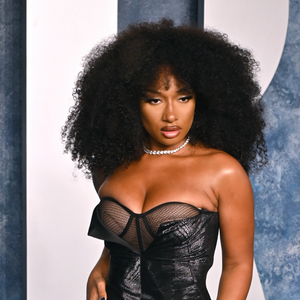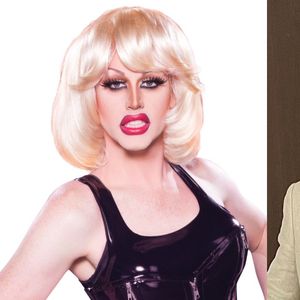Imagine dedicating close to three years of your life to telling a story you believe to be fundamentally important. Imagine producing a documentary you believe can change the country -- maybe even the world -- only to see it struggle to find a venue to screen.
Then, imagine waking up to see your film on the home page of The New York Times's website.
That's what happened to me last Thursday at 3:37 a.m. I received an auto-generated email informing me that The New York Times had officially released my short documentary, Transgender, at War and in Love.
Admittedly, I knew the moment was coming. Hours earlier, I'd set my alarm for 5:30 a.m. in a cheap hotel next to the airport in Newark, N.J. After several days of travel and work, my intent was to stay put, without distraction and with a solid wifi connection, in order to push the content out as far and fast as possible.
And then, horror of horrors -- I discovered the hotel's internet connection was down. I jumped on the phone to the front desk, desperately hoping to have my concerns allayed with by someone saying, "Don't worry ma'am, it's being fixed as we speak." Instead I got a pathetic, "Yeah, we're not really sure what's happening."
I was almost in tears. "Oh my God. Please help," I begged. "The only reason I'm in this hotel is because I need peace, quiet, and wifi. You see, my film just launched on The New York Times." I expected no sympathy, and to be judged as haughty.
But instead, at 5:47 a.m., that front desk clerk exclaimed, "Wow! That's amazing! Congratulations. Hang on. Let me check and see if it's working in the lobby." It was, so I brushed my teeth, threw on clothes, hid my hair under a baseball cap, and set up my station in the lobby with a large Americano.
You see, Thursday was the culmination of several years of financial, emotional, and professional risk, fueled by a personal conviction that filming transgender service members, who risk their military careers by coming out publicly, would contribute toward achieving open transgender service in the U.S. Armed Forces.
Transgender, at War and in Love documents Logan Ireland's groundbreaking deployment as an enlisted Airman in the U.S. Air Force. His experience is unprecedented, given that he completed his tour in Kandahar, Afghanistan, as the gender he knows himself to be, and disclosed to his leadership and some peers that his sex assigned at birth was female.
In contrast, Ireland's fiancee, Army soldier Laila Villaneuva, has had almost the polar opposite experience: she was assigned male at birth, and does not have the support of her command to serve as the woman she is.
Together in love, Ireland and Villanueva's dreams of serving in the military until retirement, having a home, and creating a family are all on the line, simply because of how society and U.S. military policy discriminate against transgender people.
At 6:25 a.m. I finally posted on my personal Facebook wall:
BOOM!!!! Commissioned by The New York Times and directed & produced by Transmilitary's Fiona Dawson in partnership with...
Posted by Fiona Dawson on Thursday, June 4, 2015
The remainder of the day was fast and furious. Each passing hour, the story garnered more views, "likes," and shares. At 4:11 p.m., I received an email from a liaison at The Times telling me that my film, branded as a New York Times Op-Doc, was leading the Gray Lady's website.
That's when I lost it. We had made it to the front page. I messaged my co-producer, sarcastically saying, "It's been nice knowing you. I'm going to die right now."
I'll admit, at this point, the ecstasy was largely driven by my own selfish sense of accomplishment. But coming in at a close second was the over-arching joy of witnessing transgender service members being placed at the front and center of computer screens across America.
But the ride was far from over. At 7:20 p.m., I got notice that the Secretary of the Air Force Public Affairs had just announced a change in the way that branch treats transgender service members. "Air Force elevates discharge authority for transgender-related Airmen separations," read the official notice. The announcement buried the lead, though: the Air Force would no longer consider a transgender identity, or a diagnosis of gender disphoria, by itself cause for separation.
To review: the same day Senior Airman Logan Ireland came out as transgender on the front page of TheNew York Times, the Air Force came out saying self-identification as transgender is no longer grounds for immediate discharge.
Technically, the military-wide policy remains unchanged. However, in order to discharge someone for being transgender, Air Force leaders now must seek approval at the Pentagon level. That means that commanders, like Ireland's, can no longer discharge him without the support of the Air Force Review Boards Agency. It's a big deal. And we didn't know the announcement was coming.
But what about Villanueva, stationed in the Army? And what about the other estimated 15,000 transgender service members who are serving in silence?
Their experiences illustrate the inconsistency throughout the Department of Defense. As I've learned time and time again over the past few years, every service member's situation is unique. There are similarities, but also twists as to how they're being treated. Decisions and responses to a troop's disclosure of a trans identity flip-flop.
Take, for example, an Army Intelligence Officer I know with 10 years of service, including deployments to Iraq, Afghanistan, and the Pacific. At first, she was generally accepted by her leadership. Those commanders were looking for a way to allow her to grow her hair out, fall under female regulations for dress, to change her pronouns, and even her gender marker in her records.
But as her appearance changed, her confidence grew -- and the backlash started. Her leadership ordered soldiers to call her "sir," assigned her extra shifts on dates when social event were held, and ordered her to change her gender on paperwork and start "correcting" anyone who used female pronouns. Today she, her wife, and their children are not permitted to attend unit social functions, unless she wears male clothing and presents as a man. In essence, she finds herself uninvited to unit events, like a holiday party, unless she pretends to be the gender she is not.
Without consistent guidance, it only takes one transphobic supervisor or commander to destroy a service member's career and make their life hell.
Since the release of Transgender, at War and in Love, Ireland and Villanueva have received an outpouring of support. The Airmen with whom Ireland was deployed have reached out to him with nothing but surprise and praise. This morning, he told me he awoke to more than 180 friend requests on Facebook. That's how it's been all week.
But despite the overwhelming public support, 36 hours after the film's release, Ireland's Chief instructed him that he must once again go by female standards of attire and appearance, until a waiver is obtained or there is further guidance from higher headquarters. This means the "shitty mustache" he so proudly wears in the film must go. And no more male dress blues, which he so excitedly discussed in the film.
I understand that the military operates on regulation. Leaders are not paid to arbitrarily interpret policy or decide which directives they wish to follow. The military is about adhering "rules and regs" -- which is why I would never make a good soldier.
But this outdated regulation, which declares any gender-affirming clinical, medical, or surgical treatment to be evidence of a "psychosexual condition," must go.
Within certain branches of the military, there appears to be a desire to let trans Americans serve openly. Just days after Ireland was told he must adhere to "female" regulations, his base commander informed the Airman that he would be allowed to go by male standards across the board. That means the "shitty mustache" is back, along with Ireland's dress blues consisting of slacks and a neatly pressed jacket.
There was no back-and-forth of good news-bad news for Villanueva, though. Three days before her story hit The Times, Villanueva was instructed to cut her hair. On Monday, she returned to her post after weeks of leave, and her personal story being blasted across the Internet. She was dressed as a male with an Army-standard hair cut.
She says she's stepping in feeling optimistic, but that is because Villanueva possesses an irresistible warmth and fierce confidence. And although the world now sees her as the woman she is, I know it is gut-wrenching for her to be constantly reminded that her employer of 12 years refuses to see her as such.
I know the Air Force's announcement wasn't prompted solely by the release of Transgender, at War and in Love. But I'd be lying if I said it wasn't exhilarating to get a direct, sweeping response from the Air Force just hours after sharing a 12-minute film that gave faces to the discrimination trans Americans face in the Armed Forces.
In reality, the change that's afoot currently is the result of the combined efforts of many on this mission. Among the numerous organizations and individuals working to end America's military trans ban, not one single entity can get the job done solo.
Just like the missions for which Ireland relies on his fellow Airmen, we must turn to our friends and allies to combine the research, lobbying, and personal story-telling to effect major change, even in an institution as steeped in regulation as the U.S. military. Given that our military is the largest employer of transgender Americans, it's clearly in the interests of the institution -- and national security -- to let these brave men and women do their job and, to borrow an Army slogan, "be all they can be."
When we allow trans people to tell their own story, without the tropes, we immediately humanize their life experience. When we see kick-ass soldiers, sailors, airmen, marines, and coast guard, whose gender happens to be different from that they were assigned at birth, we can also appreciate that transgender people are just as "everyday American" as the rest of us.
And ultimately, I believe that's what will change the game, and let transgender Americans serve their country openly, honestly, and with the dignity so many of them are currently denied.
FIONA DAWSON is director and producer of Transgender, at War and in Love, commissioned by The New York Times, and creator of the media project TransMilitary. Fiona has served on the National Board of Directors of the Human Rights Campaign and is currently on the Board of Directors for the National Lesbian & Gay Journalists Association.



















































































